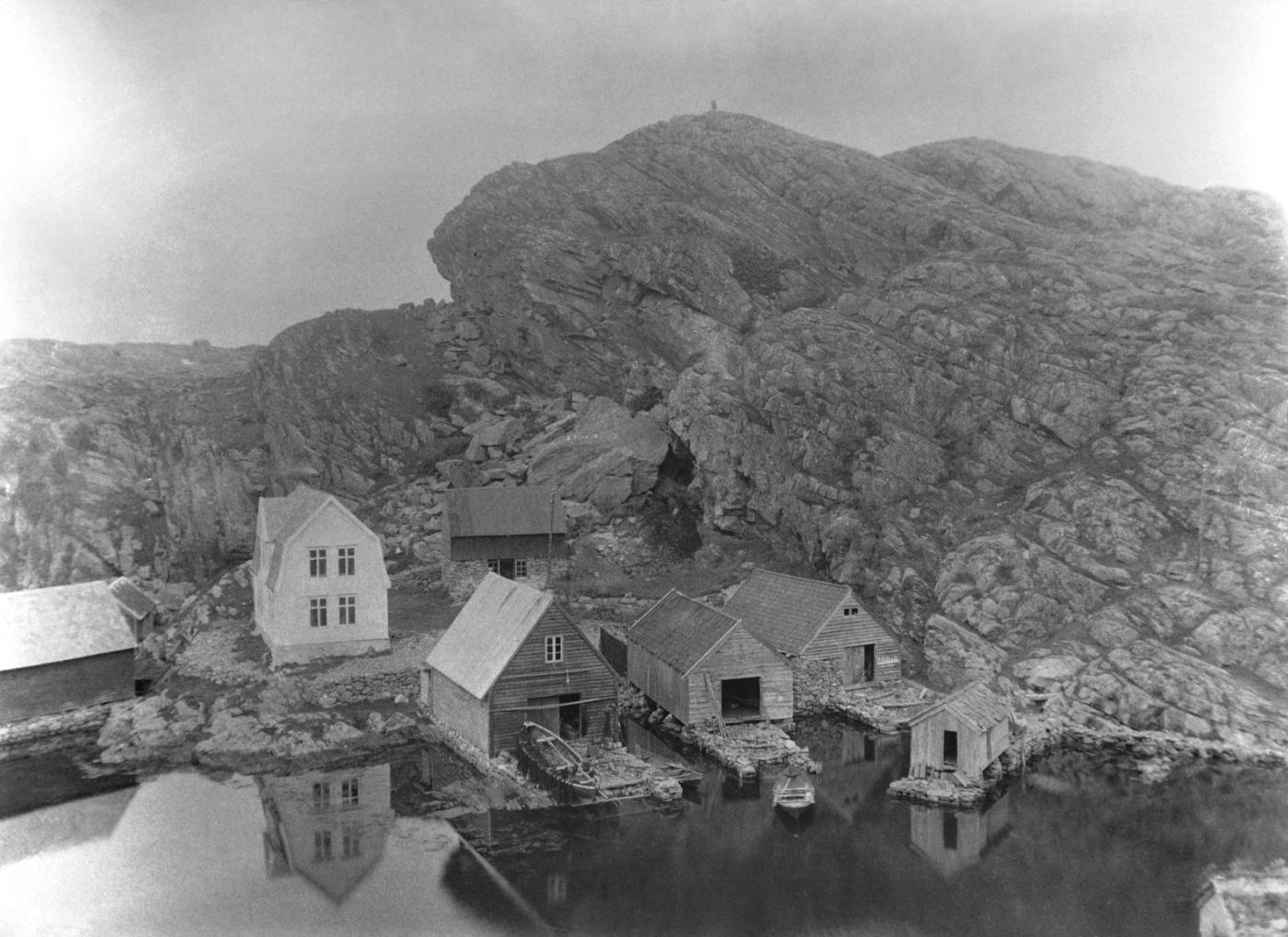Certain objects made of flint and quartz may date back to the Stone Age. Verified findings from the Early Iron Age include fragments of clay vessels shaped like buckets. Archaeologists also discovered pieces of coarse pottery that may belong to this period. From the Late Iron Age and the Middle Ages, a baking stone and fragments of a soapstone vessel were found. Additionally, items such as a whetstone, worked bone pieces, and various iron fragments—including an iron hook—were discovered within the cultural layers. These items can only generally be dated to the Late Iron Age or the Middle Ages. From more recent times, a Danish silver coin from the early 1800s was found. Just in front of the cave, there was a mound with shells and other mollusks, including oysters, mussels, smooth topshells, and common periwinkles.
The collection of findings from Kjerringholet suggests that the cave was only used for short periods at a time, although the stays were long enough for the inhabitants to eat there and repair their tools. Those who used the cave undoubtedly took advantage of the excellent hunting and fishing spots along the outer side of Øygarden.


